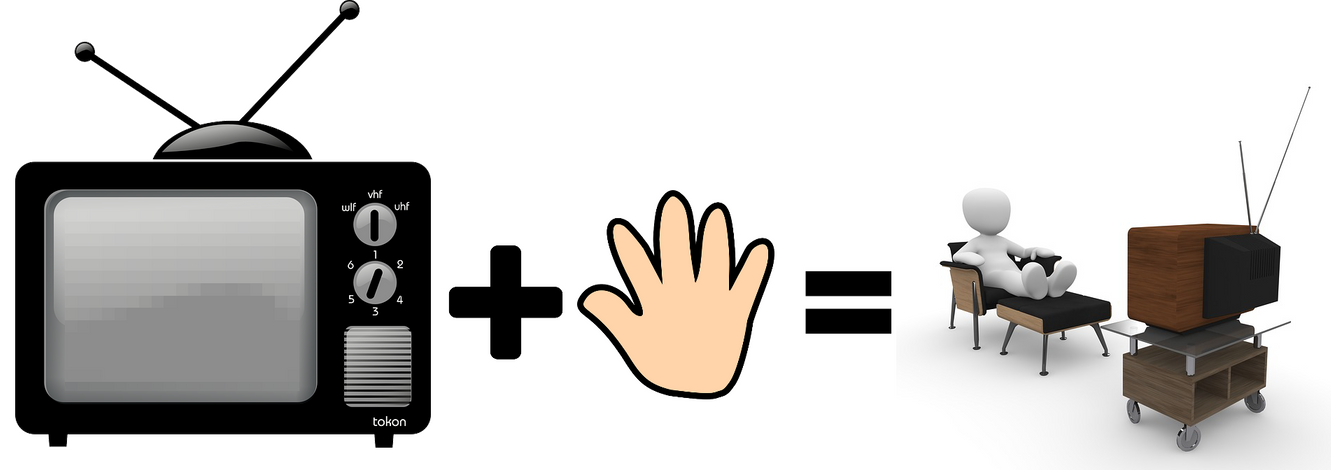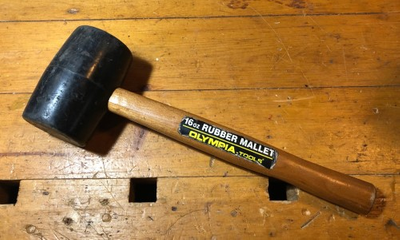Percussive maintenance
The use of percussive maintenance, aka, smacking something with your hand or rubber mallet, can solve many annoying problems. Read this article to see how it can work for you.

Percussive maintenance and its role in the perfect tool kit
James and the Giant Peach. Percussive maintenance (PM) and the perfect tool kit. What do these two have in common? Nothing, the children’s book’s title simply popped into my head as I wrote the title for this article. With that tangent out of the way, I will dive into the actual topic for today, enhancing the perfect tool kit with the addition of PM.
You may have seen my article on creating the perfect tool kit elsewhere on my site. If you haven’t, please make sure to read it when you have a moment. But now, for the fun part, incorporating percussive power into your repertoire and tool kit.
PM Etiquette
Before using this potent addition to your tool kit, please remember that “Leave no trace” is the mantra of the PM practitioner. Say that sounds like the conservationist admonition while hiking and camping, “Take only memories and leave only footprints.”
Also, always seek the permission of the owner of the balky product before the use of PM. To the uninitiated, PM can be startling.
When to apply PM
When something is not doing the job it is designed to do, it can be extremely frustrating. Thank you, Mr. Obvious[1], for sharing this tidbit of wisdom. Before calling for service or unleashing the power of the Perfect Tool kit, apply a little PM. Think of it like TLC for inanimate objects or tough love if you prefer. In other words, whack it with your hand. More times than not, it will jostle some errant component into place or unstick a part that needs to move.
Proper application of PM
With great power comes great responsibility. In the case of PM, that means using good judgment in how much percussive power to apply. Considerations include deciding how many repetitions are prudent and if the recipient of your PM can absorb the maintenance without blemish. PM is truly an art, and finesse may prove more beneficial than brute force.
How to apply PM
The key to PM success is finding the sweet spot for the most effective application. Listen to the recalcitrant item for sounds of power. Any audible hums or clicks? Remember that location and apply PM there first. Feel for vibrations or rough, out-of-balance operation and test your luck there.
· Keep the following in mind when administering PM.
· Take a break if you find yourself becoming angry – seriously, step back.
· Always use the flat of your hand. Using your fist can hurt and also dent the balky item.
Bring out the persuader

When the gentle attention of your hand is insufficient, pull out the big guns. No, not your foot. Remember, “Leave no trace.” It is time for the finest tool ever invented, next to the cordless drill that is. Drumroll, please. I refer to the venerable rubber mallet. Yes, nothing like a strategic tap or two with one of these beauties to set things right and achieve a bit of Zen calmness. Be forewarned; if the mallet is used in anger, it can dent, so be careful.
The best part about PM is that you never leave home without it. When all your other tools and resources are out of reach, whack the offending product. Not only might you get it back into operation, but it can also be immensely satisfying on top of it all.
And, there you have it. Capable yet straightforward, integrating percussive maintenance into your tool kit expands your capabilities with ease. Add it to yours today and say, “Adios, muchachos,” to many, if not most, repair bills.
[1]The Mr. Obvious show is a creation of perhaps the funniest radio program in the world, maybe even ever. If Marconi had heard Bob & Tom, he might have stepped up his development of the radio.
